Key takeaways:
- Dialogue is crucial for character development and plot progression, often evoking deeper emotions through rhythm and subtext.
- Distinct character voices and pacing in dialogue enhance authenticity and engagement, helping readers connect with the story on a personal level.
- Agatha Christie’s dialogue style showcases the power of nuance, revealing character depth and tension through clever wordplay and pacing.
- Effective dialogue reflects context and natural speech patterns, capturing real-life interactions to enhance the overall realism of character conversations.
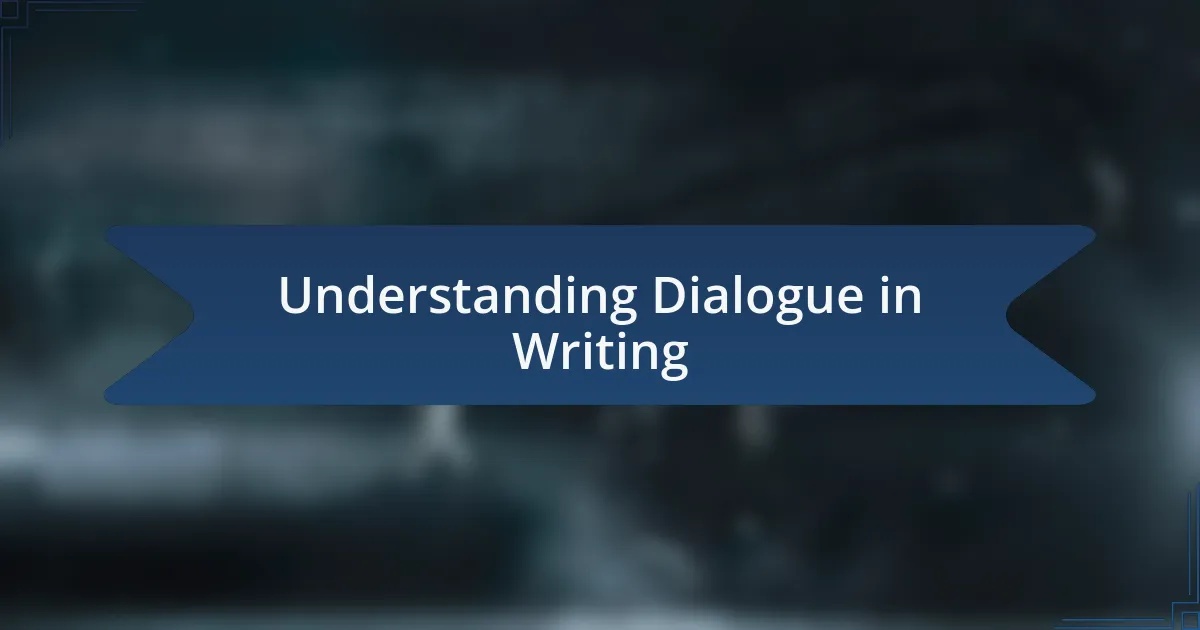
Understanding Dialogue in Writing
Dialogue in writing serves as a powerful tool for character development and plot progression. I often find that when I immerse myself in crafting conversations, it’s vital to consider not just what characters say but how they say it. Have you ever noticed how a single choice of words can shift the tone entirely?
I remember a moment in my own writing when I struggled to convey a character’s tension. It wasn’t until I focused on their stilted speech and abrupt pauses that the dialogue truly reflected their inner turmoil. This experience reinforced my belief that the rhythm and flow of dialogue can evoke emotions more intensely than any narrative description.
Additionally, the use of subtext—what’s unsaid—can add layers of meaning to conversations. I’ve learned that a character’s hesitation or a sigh can communicate depth and nuance, even if the words seem simple. How often have we sensed the dramatic weight in a pause between two characters? That’s the magic of dialogue; it breathes life into the storyline, engaging readers on a more personal level.
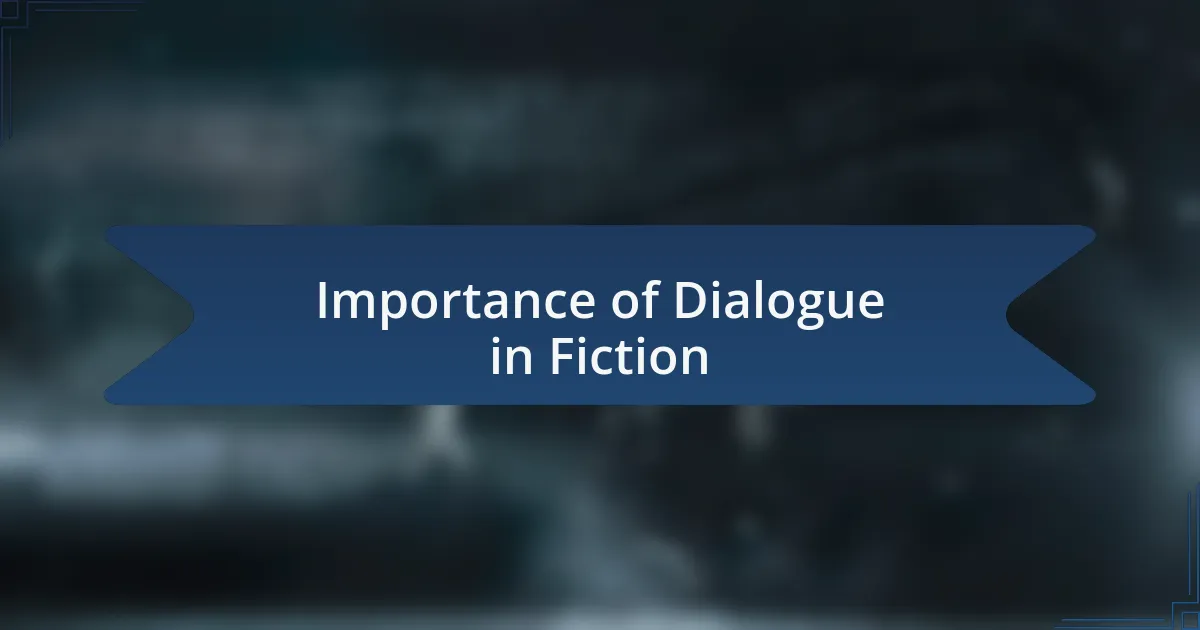
Importance of Dialogue in Fiction
Dialogue in fiction is essential not only for revealing character traits but also for enhancing the overall narrative. I remember writing a scene where two characters were about to confront a shared past. Their dialogue was electric, charged with unspoken feelings and unresolved conflicts. It struck me how crucial those exchanges were—each word had the power to unravel their history and propel the story forward, making the tension palpable.
When I think about the role of dialogue, I often reflect on how it serves as a window into a character’s mind. Just the other day, I crafted a conversation over coffee between two friends who were re-evaluating their relationship. I realized that every playful jab and heartfelt confession didn’t just serve the moment; it revealed their fears and desires in a way that pure narration could never capture. Do you remember a book where character interactions lingered in your mind long after you turned the last page? That’s the artistry of well-crafted dialogue—it’s unforgettable.
Moreover, dialogue can set the pace and tone of a story, shaping the reader’s experience. In writing a tense exchange, I once opted for terse, clipped sentences that mirrored the characters’ frustration. The change in rhythm drew readers in, making them feel the urgency and anxiety that the characters were experiencing. Have you noticed how a dialogue-heavy chapter can feel faster, almost cinematic? This dynamic quality of dialogue not only maintains engagement but also transforms the protagonist’s journey into a vivid adventure.
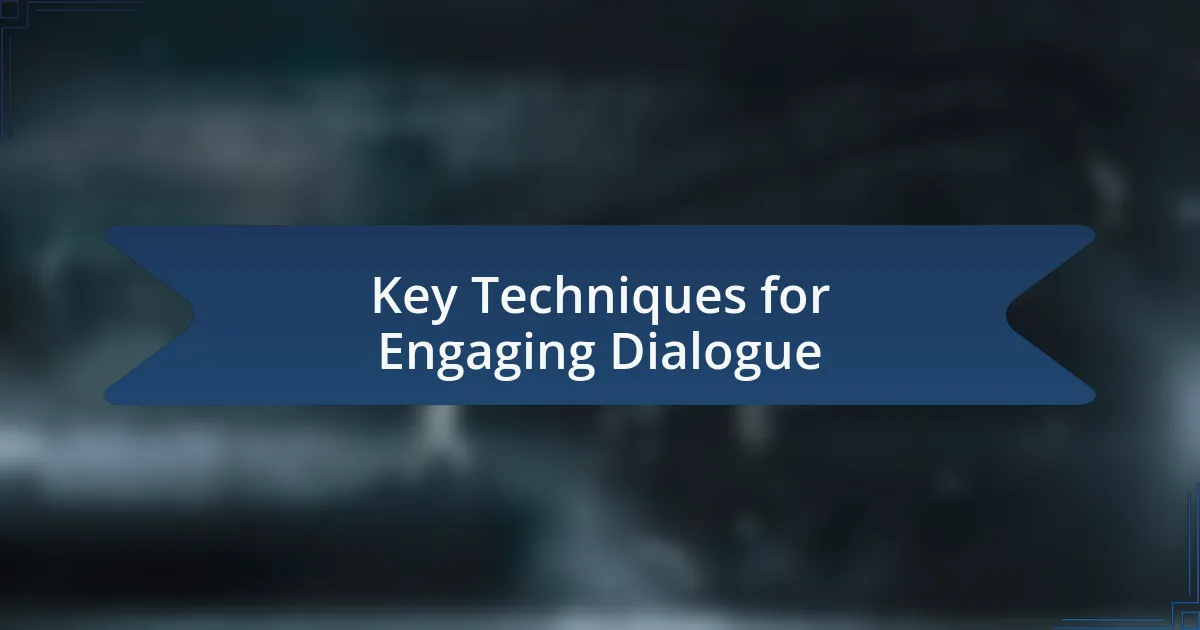
Key Techniques for Engaging Dialogue
One key technique I’ve found invaluable in writing dialogue is the use of subtext. It’s fascinating how characters often say one thing while meaning another. For instance, I once wrote a scene where a character was reluctantly accepting a favor but loaded with bitterness. The unsaid feelings bounced between them like a game of tennis, creating a rich layer beneath the surface words. This not only makes the dialogue feel more authentic but also invites readers to read between the lines.
Another technique I cherish is ensuring each character has a distinct voice. When I was developing a quirky detective, I played with his idiosyncratic phrases and a penchant for obscure references. It was a joy to see how his dialogue not only revealed his personality but also made the interactions more colorful and dynamic. Have you ever noticed how a character’s unique way of speaking can leave a lasting impression, making them almost come alive?
Finally, pacing is crucial in dialogue. I learned this firsthand during a heated argument scene where I intentionally varied the length of the exchanges. Short, rapid-fire lines heightened the tension, making readers feel the urgency of the moment. On the contrary, a longer, reflective passage allowed characters to explore their feelings, creating a natural ebb and flow. Isn’t it remarkable how dialogue can control the tempo of a story? Mastering these techniques truly elevates the dialogue from mere conversation to a compelling element of storytelling.
Analyzing Agatha Christie’s Styles
Exploring Agatha Christie’s dialogue style reveals her masterful manipulation of character interactions. What strikes me most is how she often employs clever wordplay; readers can feel the tension simmering below the surface. I recall reading “The Mousetrap” and being captivated by a seemingly innocuous exchange that hinted at deeper secrets. Doesn’t it make you wonder how much nuance can be packed into a few carefully chosen words?
Christie’s characters often engage in dialogues that reflect their backgrounds and motivations, woven seamlessly into the plot. This reminds me of when I crafted a scene inspired by her style, where dialogue served not just as banter but as a vehicle for character revelation. Have you ever noticed how the way a character speaks can immediately signal their social status or emotional state? It’s astonishing how Christie used this technique to build rich, believable worlds.
Moreover, the rhythm of Christie’s dialogue stands out as a defining characteristic. There are moments of rapid exchanges that can leave readers breathless, followed by poignant pauses that invite reflection. I remember editing a suspenseful scene and deliberately mimicking this ebb and flow to evoke similar tension. It’s interesting to observe how Christie’s pacing can influence our emotional responses—how does her use of timing resonate with your understanding of dialogue’s impact?
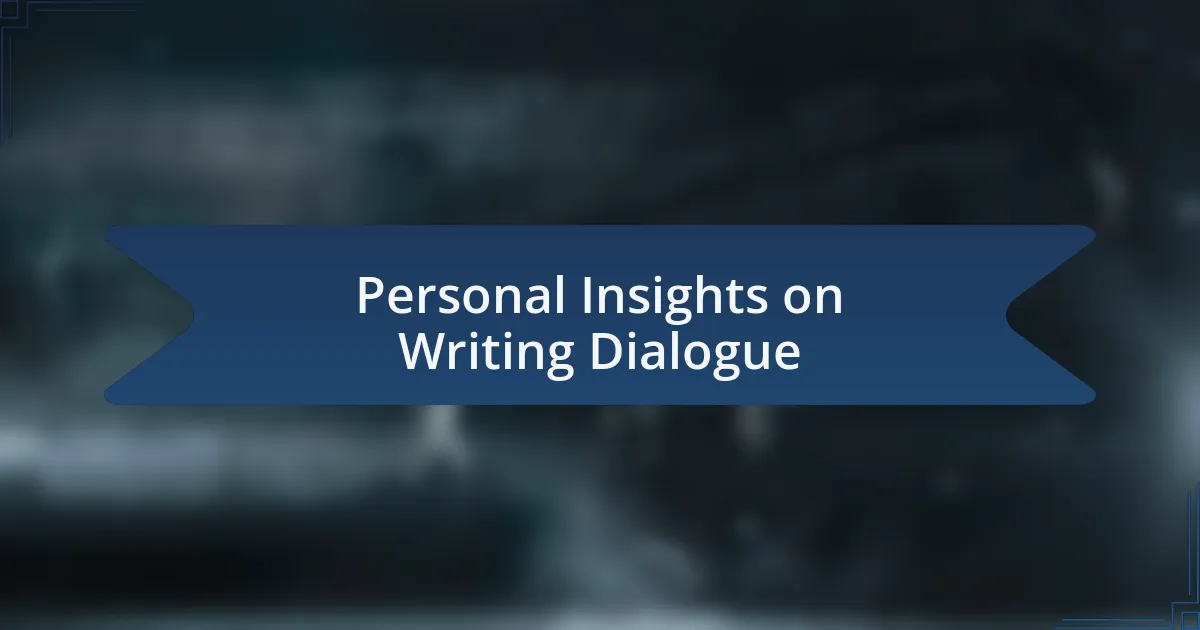
Personal Insights on Writing Dialogue
When I approach writing dialogue, I often find myself reflecting on the importance of subtext. In Christie’s works, what’s left unsaid can be just as powerful as the words spoken. I once experimented with this in a short story, crafting a tense conversation between two characters where silence spoke volumes—readers commented on the unresolved tension, and it made me realize how subtlety can elevate dialogue to a new level. Have you ever tried writing a scene where what’s not said captures the reader’s attention even more?
Another insight I cherish is the necessity of distinct voices for each character. I remember working on a project where I needed to differentiate a confident detective from a nervous witness effortlessly. By focusing on their individual speech patterns, I found that the dialogue not only became more vivid but also rooted the characters in my readers’ minds. Have you ever noticed how each character’s uniqueness can make their words feel alive and relatable?
Finally, I believe that writing dialogue is an instinctive blend of observation and practice. I often draw from real-life conversations—those fleeting moments that reveal true human emotion. Once, during a casual chat with a friend, I captured the frustration in their voice over a trivial matter, translating that raw intensity into a dialogue scene later. It made me realize that authentic experiences can inform our writing beautifully—how do your real-life interactions shape the dialogue you create?
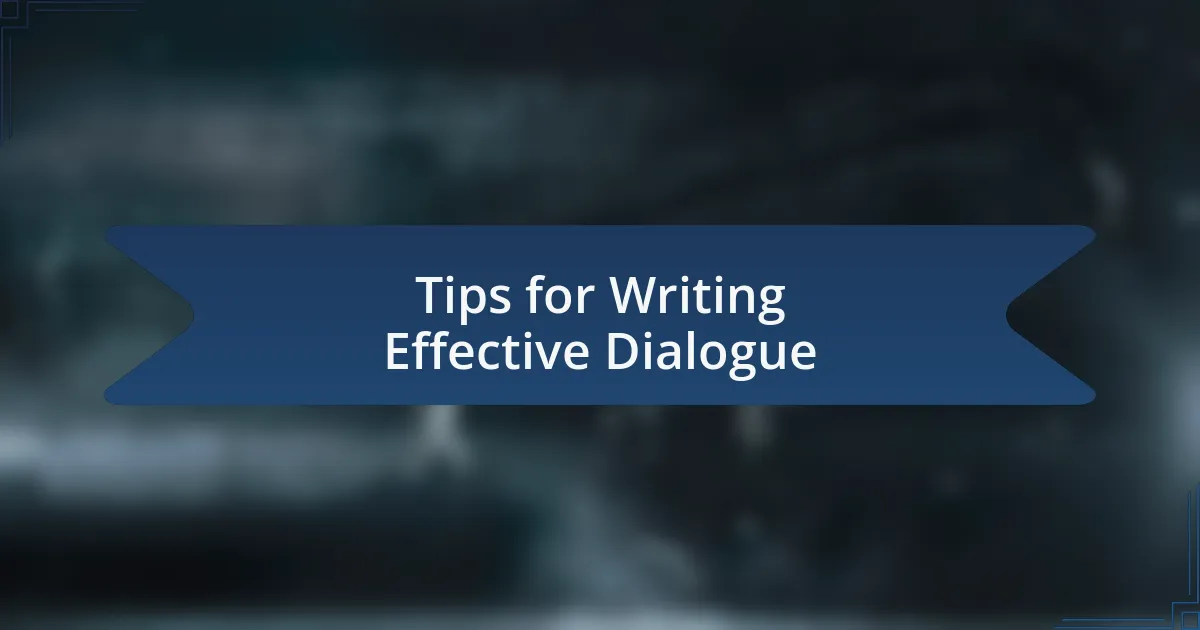
Tips for Writing Effective Dialogue
When crafting dialogue, I find that rhythm and pacing can dramatically impact how a scene feels. I once had a character in a heated argument, and by writing their lines in rapid bursts, I created a sense of urgency that engaged the reader. Have you considered how the flow of conversation, whether sharp and quick or slow and deliberate, can mirror the emotional stakes at play?
Another crucial tip is to think about context. The setting and situation can dramatically influence how characters speak. I remember writing a scene in a bustling café, where background noise seeped into the dialogue, making characters lean in closer and speak more intimately. This interplay reminded me that dialogue doesn’t exist in a vacuum—how does the environment in your scenes shape what your characters express?
Lastly, always strive for authenticity by incorporating natural speech patterns, including interruptions and overlapping dialogue. In a recent story, I had two friends who frequently interrupted each other, showcasing their close bond and playful rivalry. I found that this mimicry of real-life conversation added a layer of depth, making their interactions feel genuine. How do you ensure that your characters’ spoken words resonate with a true-to-life quality?